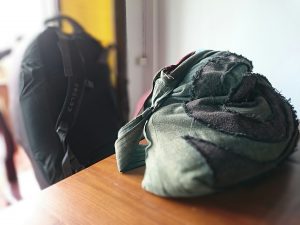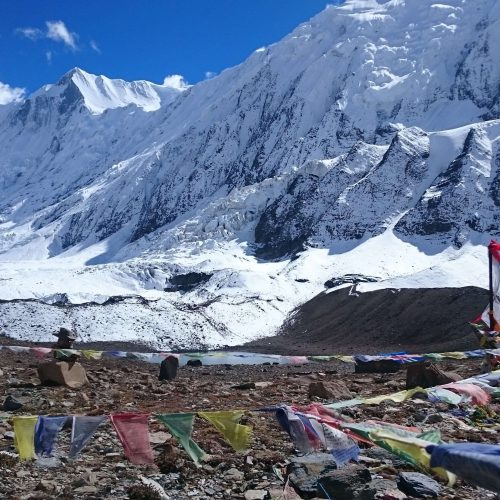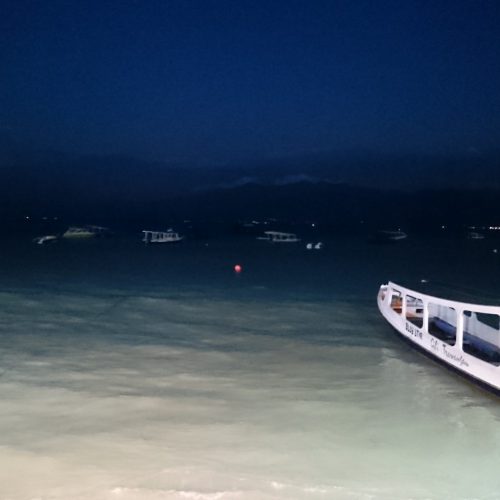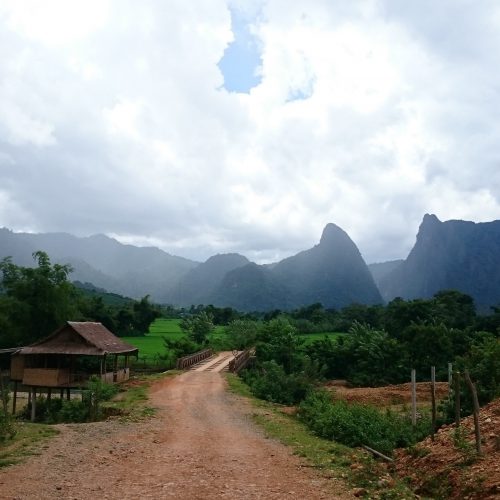Some months ago, my friend Wolfgang decided to travel the world and asked me if I could write a guide that he could follow, since he didn’t even know what backpack to buy and what to put in it and, considering he is German, he wanted to be prepared.
This is the list that I wrote for him. It describes all the things I took during my own world trip, some things that I would change if I did it again and the lessons that I learned along the way. Hopefully, you will find this guide helpful!
Clothes
The name of the game is efficiency: everything you carry in your bag should be able to fulfill many purposes and you should use that stuff often, so you will only carry the essentials. These lists contain what I took, with the exception of the light boots (I took some converse instead but I regretted it since the boots would have been way more helpful). Also, keep in mind that during my trip I went to very cold and very hot places (the temperature range was between -20 to around 40 Celcius), so adjust accordingly. For example, you might not need a down jacket and a thermal if you won’t be going to very cold places.
Handbag (small handbag I bought in Thailand which I would use as a pillow all the time):
- Umbrella
- Foldable rain jacket
- Socks (for the plane)
- Light comfortable pants (for the plane)
- Pen (to fill in visa on arrival applications)
- USB battery
- Phone charger and cable
- International power plug adapter
- Toothpaste and toothbrush
- Deck of cards
- Sunglasses with case
- Sleep mask
- Earphones (with active noise canceling if possible)
- Light zip hoodie
- Individual baby wipes
- Small tissue pack
Backpack (Osprey 60L backpack):
- Bluetooth speaker
- First aid kit and medicines (stuff for cuts, upset stomach, flue, etc)
- 2 jeans
- 2 shorts
- Swim shorts
- Packable down jacket
- Long sleeve thermal
- Flipflops
- Sandals, to use in hot places (I would use these for weeks in a row in India and Southeast Asia)
- Comfortable light tennis shoes (trail running shoes would be good since you can use them for walking, running, and hikes)
- Maybe some light boots would be helpful as well (Palladium boots for example), to use in places that are cold, rains a lot, have snow or mud
- Beanie
- Gloves
- Multipurpose bandana (to be used to cover your neck from the sun, to cover your mouth while riding scooters/bikes, and to use as a scarf at cold places)
- 10 pairs of socks
- 10 underwear
- 7 t-shirts
- 2 long sleeve button shirts (that can serve many purposes; to dress up for fancy places, to cover your arms from the sun in sunny places, to layer up in cold places)
- 2 tank tops
- Pajama (1 t-shirt, shorts and pants)
- Cheap extra phone (as back up in case I lost my main phone)
- Extra wallet with spare credit/debit cards and identifications
- Small camelback with a 2-liter hydration pack (for hikes or long walks)
- Bag to put shoes in
- Bag to put dirty clothes in
- More individual baby wipes
- Toiletry bag
- Toothbrush
- Toothpaste
- Deodorant
- Aloe vera (for sunburns)
- Bug spray
- Sunblock
- Small electric battery shaver
- Small soap to wash clothes
- Nail clippers
- Liquid body wash
- Small shampoo
- Personal extras
Websites and apps
- Kayak app, to keep track of all your flights, lodging, etc
- Evernote app, for your journal and to take notes of recommendations people give you
- Maps.me app, for offline maps
- Learning apps = Coursera, Khan Academy, Udemy, etc
- Amazon Kindle app
- Audible app
- Podcast app, and have many offline to listen on the road
- Workaway.info, to find volunteering opportunities
- Dhamma.org, meditation retreats, and volunteering
- Visa website (I had one for Americans, so find one for you), to see what visas you need for each country, and to know if you need to prepare in advance or if it’s just visa on arrival (I would use this website all the time)
Advice
- Have fun and enjoy the moment.
- You don’t need to plan too much in advance when traveling to a new place, just book the first night there, and figure things out as you go (except if you are going to a place during high season, then book the nights you are thinking about staying).
- As soon as you get to a place, ask in the hostel/hotel front desk for advice:
- How much you should pay for a taxi;
- things they recommend eating;
- places to visit;
- how long they recommend staying to see the important stuff there;
- how do you get to the next city/place you are going (train, bus, plane, taxi, boat, public transportation, etc.), and if you need to buy tickets in advance (and how much in advance).
- Talk to people, you never know who you will meet: saying hello to everyone with a smile can go a long way.
- Take the opportunity not only to travel and have fun, but also to learn during your downtime (listen to audiobooks, podcasts, take online classes, and read a lot of books).
- I have many books and audiobooks in my Amazon account; if you could read/listen to most of them, and apply them, you would come back a very different person (in a good way).
- Keep a journal on your phone! And write a little bit every day (I didn’t do this and I really regret it).
- Use workaway to volunteer at many different places. Consider it as a “life university” type of education (I really regret I only volunteered once; next time, I will volunteer not only in farms, but in agricultural sectors, self-sustaining communities, schools, hostels, etc.to learn as much as possible about various things).
- Use dhamma.org to sign up and attend your first 10 day (12 in reality) meditation retreat. They are donation-based and include everything (food, lodging, etc.). After you attend the first one, then you can do volunteering with them, this is a great way to give, help and meet new interesting people, and to get to know a place without spending money. There are centers all over the world (this is a good option for expensive places like Australia or New Zealand).
- Do travel hacking! I only learned about this until I came back, but I would have saved thousands of dollars if I knew about it before. Some websites to learn how to do it:
Documents and stuff
- Make sure your phone is waterproof and has a good camera; if not, then buy one that is (you won’t regret it).
- Take with you at least two travel credit cards (and call to let them know where you will be going).
- Take with you at least two travel debit cards (and call to let them know where you will be going).
- Sign up for airline alliance reward accounts, such as Star Alliance, Oneworld, and SkyTeam.
- In a Google Drive account, save pictures of all your documents, including credit cards, and make them available offline; this was extremely useful on more than one occasion.
- Have more than one form of identification.
- Bring your student ID (ideally one that doesn’t have an expiration date).
- Get your international driving permit, to avoid getting ticketed in some countries (I almost got a ticket in Thailand and India).
- Get travel insurance! It’s a requirement if you go hiking to Nepal for example.




